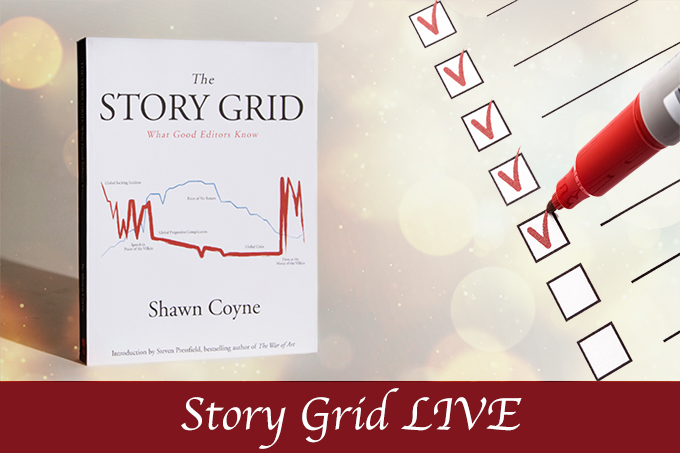Story Grid Live
Whew. Another whirlwind weekend away, this time at a writing conference down in Tennessee. My travel schedule is getting exhausting, y’all! But what a weekend it was, attending Story Grid Live. New friends, new knowledge, new ways of implementing my editing business. All the best ways forward.
What is the Story Grid?
Simply put, it’s a method of evaluating your manuscript to prepare for revisions. It’s all about knowing WHAT to revise, what’s working in your story and not working, from a global level down to a scene level. It’s comprehensive and a bit overwhelming at times, but it’s incredible. It’s a checklist for your manuscript to determine your next steps forward to making your story the best it can be.
Now, why did I say making your “story” the best it can be and not your “book?” Because this is the STORY Grid, not the “writing grid.” Story Grid, as you can surmise, is all about the story, not writing itself. It’s about making your story work first and foremost, with proper turns and revelations, complications and crises in the right positions to elevate the tension, etc. It has nothing to do with writing craft, and the grammar-and-word nerd in me dies a little at that.
But that’s okay. There’s no tool to be used on its own to the exclusion of all others, and Story Grid is no different. Not enough resources concentrate on the story itself, and that’s exactly what I aim to do in my editing business: developing the story of a book first and foremost. Too many writers move on from a first draft by proofreading and sprucing up the language.
That isn’t the next step. Shaping and reshaping your story is.
At this conference, I not only got to immerse myself in all things Story Grid, but I got to meet and chat with people who spoke the same writing vocabulary. That is SO NICE, let me tell you. What’s more than that, I got to meet the people in charge of it all: Shawn Coyne, Tim Grahl, and Steven Pressfield. And got them to sign some books, of course.
My biggest success this weekend, though, was getting Shawn Coyne’s permission to use the Story Grid methodology in my editing business. That was my main goal, and I wanted to ask permission in person, to have that face-to-face connection. I can’t (yet) advertise myself as a Story Grid Editor—that’s for people who go through their certification program—but I can use the tools that work for me to deliver critiques and revisions on clients’ manuscripts. Success!
Speaking of the editor certification program, I will be doing that next September, when it’s next offered. I’ve already applied and got accepted, and I can’t wait for the year to pass so I can start taking part in the community as a certified editor. There are so many exciting things that the editors are doing now: podcasts, story guides to masterwork books, etc., and I look forward to making my mark with my own projects.
I do have an incredible feeling of FOMO (fear of missing out) about not doing the training earlier, but it just wasn’t the right time with my concussion and everything. I can’t blame myself for the past and what didn’t happen; I can only move forward and reshape my present and future to what I want it to be.
All in all, this was a fun, informative, and professionally successful weekend. The Story Grid is a program that I’ve used and loved for several years now, and getting more involved in it and the community feels awesome.
What leaps have you taken lately to grow your professional or personal life? Share in the comments below!


